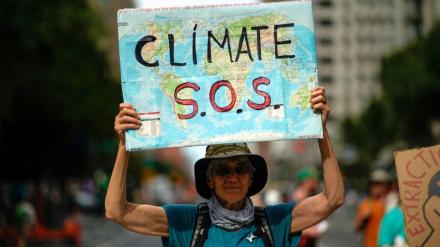By Srinath Sridharan,
Climate change is an undeniable reality that has begun to disrupt the business world and the broader economy. The increasing frequency of extreme weather events, severe heatwaves, delayed monsoon cycles, rising sea levels, and shifting agricultural patterns are already affecting economic productivity, asset values, and inflation. The climate emergency necessitates a paradigm addition to the Reserve Bank of India’s (RBI) mandate. It is imperative that the Monetary Policy Committee (MPC) incorporates carbon mitigation targets into its core responsibilities.
The integration of carbon mitigation into monetary policy is not without precedent. The European Central Bank and the Bank of England have started incorporating climate risks into their financial stability assessments and monetary policy frameworks.
The RBI recognises that climate change poses a threat to monetary policy and has been vocal about it. The broader lack of urgency in public policy on Indian climate adaptation and mitigation, both at the national and state levels, creates an opportunity for the RBI to take lead.
In addition to its dual mandates of price stability and maximising employment, the RBI should adopt a third focus on carbon mitigation targets aligned with national commitments. With their functional permanence, central banks are typically more long-term focused, data-driven, disciplined, and urgent in their mandates than political institutions.
Critics might contend that adding carbon mitigation to the MPC’s mandate could dilute its focus on traditional objectives like controlling inflation and fostering economic growth. However, these goals are not mutually exclusive. In fact, addressing climate risks can enhance economic stability and growth prospects.
Climate change will inevitably affect monetary policy by slowing productivity growth through damage to infrastructure and social stability, and by increasing uncertainty and inflation volatility. The transition from brown to green assets, while beneficial for the global good, will present its own economic and social risks. Concerns of financial stability arise when asset prices adjust rapidly to unexpected realisations of transition or physical risks. Monetary authorities must identify climate-induced shocks to the economy and prepare a framework to address them.
Incorporating climate risks into regulatory frameworks poses significant challenges. It requires long-term assessments and new methodological approaches to ensure frameworks reflect actual risks. It is crucial that these efforts strengthen, rather than weaken, prudential regulation. For example, policies allowing financial institutions to hold less capital against debt labelled as green could easily backfire, leading to increased leverage and financial instability if the underlying risks in that debt are not adequately measured.
Policy instruments such as establishing a carbon reserve system or setting minimum reserve requirements with commercial banks will encourage investments in mitigation and channel capital towards sustainable activities. By incorporating carbon credits and allowances into the central bank’s balance sheets, it can regulate the money supply to balance economic and environmental needs.
Climate change represents a market failure within the existing global economic model, stemming from the negative externality of not adequately accounting for carbon emissions. Economic agents, including nations and entities, enjoy the benefits of greenhouse gas emissions while bearing none of the societal or environmental costs, thus incentivising their overproduction. In market-based economies, governments typically intervene to correct such failures. Various solutions have been attempted and failed, including direct taxes to account for associated costs and privatisation to incentivise sustainable resource management. Our institutions are simply not equipped to deal with this new type of global common resource pool dilemma.
To better address such externalities, we need a new model where environmental costs are intrinsic to economic activities.
A revised monetary framework, where carbon mitigation outcomes help regulate the global money supply, could balance economic needs with environmental sustainability. A currency backed by carbon mitigation outcomes holds value tied to environmental stewardship, with its intrinsic worth derived from real environmental impact. This link between environmental preservation and economic growth ensures as the economy expands, the demand for the money supply rises, driving the need for more carbon mitigation. Central banks, which have traditionally pegged value to precious metals like gold or silver, must now consider incorporating carbon into their policies. Carbon is scarce, expensive, and challenging to produce, making its supply relatively inelastic. Carbon is gaining cultural value, symbolising sustainability credentials much like gold once represented wealth and status. This positions carbon as a new standard for measuring and signalling sustainability, a robust store of value, and a foundation for our monetary system.
Integrating carbon mitigation targets into central bank mandates is a recognition that economic stability and environmental sustainability are inseparable. The transition to a low-carbon economy is an urgent imperative, and the RBI has a unique opportunity to lead India’s journey to net zero by embedding carbon mitigation targets within its MPC mandate.
The author is a policy researcher and corporate advisor.
Disclaimer: Views expressed are personal and do not reflect the official position or policy of Financial Express Online. Reproducing this content without permission is prohibited.
